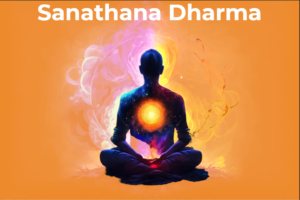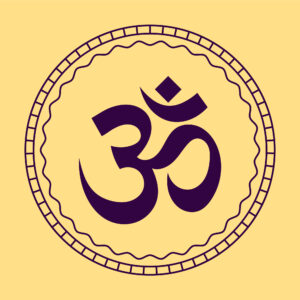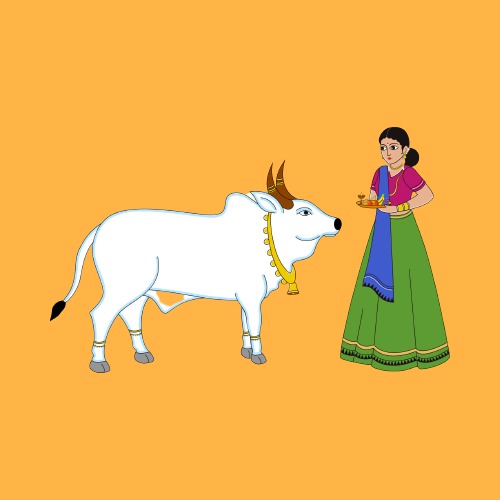Understanding Sanatana Dharma
 Dharma is a complex and multifaceted concept that originates from Vedas. “Vedo akhilo dharma mulam” means The Vedas are the source of Dharma. Vedas pre-date Buddhism and Jainism, they also accept most of dharma with a few changes to fit their tradition. It encompasses a broad range of meanings and interpretations, making it challenging to define in a concise manner.
Dharma is a complex and multifaceted concept that originates from Vedas. “Vedo akhilo dharma mulam” means The Vedas are the source of Dharma. Vedas pre-date Buddhism and Jainism, they also accept most of dharma with a few changes to fit their tradition. It encompasses a broad range of meanings and interpretations, making it challenging to define in a concise manner.
What is Dharma? Dharma meaning or Sanatan meaning: The most pivotal element of Hinduism is the term ‘Dharma,” which highlights the various principles and duties that have to be followed by Hindus. Since the overall discussion on Dharma is very complex and what is appropriate and inappropriate requires consent by many dharmik subject experts who are also required to be strict practitioners (do intense sadhana). While dharma is easy to understand in simple situations. The understanding of dharma in non-standard situations is bit complex for a layman.
The most pivotal element of Hinduism is the term ‘Dharma,” which highlights the various principles and duties that have to be followed by Hindus. Since the overall discussion on Dharma is very complex and what is appropriate and inappropriate requires consent by many dharmik subject experts who are also required to be strict practitioners (do intense sadhana). While dharma is easy to understand in simple situations. The understanding of dharma in non-standard situations is bit complex for a layman.
Desa-kala-patra and Sanatan Dharma:
Dharma is not a static, universal concept that is rigid. It is flexible and the right form or type of dharma is based on desa, kala, and patra. Desa means place, kala means time and patra means role of person. Though it may look a bit complex initially, once a little effort is put into understanding it, dharma becomes simple to understand. The advantage of this situation-appropriate framework is that it makes dharma valid in a wide variety of situations. In the below section, we discuss a few types of dharma – samanya dharma, vishesha dharma, and apad dharma.

Samanya Dharma
Samanya dharma is easy to understand even for children. Samanya Dharma is appropriate behavior in various situations for both external conduct and internal self-discipline. These are simple to understand and follow. The significance of Samanya Dharma stems from this point. The Samanya Dharma applies to everyone rich or poor, educated or uneducated, married or unmarried, young or old, male or female.

Apad Dharma
“Apad Dharma” means the adjustment of standards of conduct to suit crisis situations / adversities that affect the entire framework of society. During times of personal calamities or extremely dangerous situations, the Apad Dharma concession is acceptable. Once the crisis is over, the person must strive to again follow the normal standards of Samanya Dharma. Apad dharma is not applicable in normal situations.

Vishesha Dharma
Vishishta Dharma is something that differs from one person to another based on their role in society. Now that we understood what is vishista dharma, let us understand it at higher level by considering ‘varna dharma’ and ‘svadharma’ Vishesha Dharma also includes “Varna Dharma” and “Svadharma.” “Varna Dharma” refers to the set of duties that are related to a given social groups that are established.
Additional Reading – Related to Dharma
“Aatmikta” is a term that is mentioned in several scriptures of Sanathana Dharma which is called Hinduism by outsiders. In modern society, we are used to our schools and colleges developing skills and knowledge….. Read More
Hinduism or more accurately Sanathana Dharma came into existence in India, and gradually expanded to some other countries. Hinduism has to be considered more as a way of ethical life rather than an organized religion…. Read More
The concept of “Dharma” is the foundation of Hinduism or Sanathana dharma. Bharat or India is the world’s oldest living civilization.We have already published articles earlier on samanya dharma and vishista dharma…. Read More
The most pivotal element of Hinduism is the term ‘Dharma,” which highlights the various principles and duties that have to be followed by people.The “Dharma” is again divided into two major categories…. Read More
When we see “Samanya Dharma”, the word “Samanya” conveys the meaning of “general/common.” So, Samanya Dharma focuses on those duties and principles that have to be followed by every individual…. Read More
To lead a meaningful life, every person should have goals in his/her life. As per the Indian scriptures these are four goals to achieve in life, which are nothing but Purusharthas. The four Purusharthas are Dharma, Artha, Kama, and Moksha…. Read More
The words Guru, Swami and Yogi are the indicators of a person’s social and spiritual stage. Most people use these words alternatively. But there is difference among these names….Read More
With time, that was replaced by the practice of conveying the essence of those scriptures in the form of stories. These stories, which mainly come under “Itihasas” and “Puranas”, aptly conveyed the logic and spirit of Hinduism….Read More
Hinduism differs from these religions in many ways, and this is not only surprising but there is a lot of ignorance about the same. Organized religion encourages group activity along with a congregation of fellow believers. Abrahamic religions allow for a large congregation of worshipers to pray together……Read More
There are many wrong notions of tantra popularized by forces against Sanathana Hindu Dharma. Before going into all those details, it will be of help to have a look at the basics of both Tantra and Samanya Dharma…. Read More
According to Hinduism “aatma” is the real person of all life forms and is eternal. When a person dies only the body dies not the aatma of the person. It is only because of aatma that the physical body gets life….. Read More
The term “Aatmikta” is one of the primary concepts of Hinduism, and its mention is there in almost all the holy and venerated books of Sanathana Hindu dharma philosophy. Aatmikta is inclusive of all facets such as…. Read More
“Sadachar” and “shishtachar” are important terms frequently mentioned in many scriptures of Hinduism. Many people mistakenly opine that these two words are synonymous with each other…. Read More
Hindu Sacred Books – Darshanas
Hinduism the Indian religion has over 1.25 billion followers, who follow the dharma or the Hindu way of life…. Read More
The Vedas, apart from being the holy Hindu books, are also the most ancient ones. The Hindus revere the Vedas as the most authoritative of all the sacred books…. Read More
Hinduism differs from other religions in several ways. The most striking difference is that there are dozens of sacred Hindu books with profound concepts and philosophies, while most other religions have only one or a few holy books…. Read More
The Darshanas are the intellectual aspect of the Hindu scriptures while the agamas cover theological aspects of Hinduism. The Agamas, Puranas, and itihasas are meant for the regular Hindu public…. Read More
